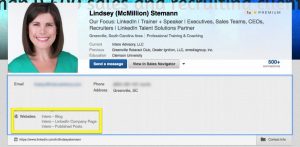— October 29, 2018
With Halloween just around the corner, many people are looking for a good scare. Spooky decorations are adorning suburban lawns, horror movies are premiering left and right, and “Monster Mash” seems to be playing everywhere. However, there is one place where you never want to scare your customers: your website’s home page.
It’s happened to everyone. You do a quick search for something on the internet, come across a promising website and BAM. Your entire screen is taken over. Not by an advertiser, but by the website itself, which wants you to enter some type of information. You can’t even tell if the site has what you’re looking for because it’s blocked by the message. If you’re anything like us, you probably just leave the website unless you’re fairly certain it has what you want.
On the surface, on-entry tactics can seem like a great idea. After all, in many cases, the visitor enters your site and immediately gets offered a discount. What’s not to like?
Unfortunately, that is not how most consumers perceive on-entry ads. Since the pop-up blocks either part or all of the screen, the user is prevented from seeing the content. Thus, it’s impossible for a new customer to see if the site actually sells what they’re looking for. Plus, on-entry strategies almost always require the user to interact with them in some way. Ideally, that would mean that the user’s email is captured. But if the customer doesn’t even know whether your site sells what she is looking for, why would she bother entering her information? Instead, she’ll probably just go back to her Google search and pick the next site down.
Here are a few more examples of on-entry strategies that are often ineffective:
“Get Updates on New Arrivals”.
This goes back to the same point as the previous issue. If the user knows nothing about your site, why would they care what your new arrivals are? That’s like being asked if you want tour updates from a musical act you’ve never heard of. It may gather you some emails, but it will cost you customers from the get-go.
“Sign in to Access”
This inane request doesn’t even offer the customer an incentive to continue viewing your site. This is especially problematic when the customer is new. Why would they spend several minutes signing up for your site when they could just as easily find what they need elsewhere?
“Sign up for our Newsletter!”
This particularly irritating offender is common among a surprising number of popular websites. Users will often be shown this pop-up before the site has been able to provide them with any useful information. If a user is attempting to find a particular item, (which is why most people use online retailers) why would they find it helpful to sign up for a newsletter concerning all of your company’s updates?
Real World Parallels
One of the easiest ways to understand why on-entry strategies are generally ineffective is to think of real world examples of this tactic. On the easy-going, less obtrusive side, we have tactics like those used by the Salvation Army around the holidays. Generally speaking, a fundraiser simply stands in front of a store with a large kettle, ringing a bell. Shoppers know that the representative is there, and often give freely upon entering or exiting with low pressure.
On-entry strategies would be similar to the bell-ringer standing directly in front of the entrance of the store, blocking shoppers until they either gave money or said “no.” While, the Salvation Army would probably make some money doing it this way, the reputation of the charity would suffer immensely. What we in digital marketing refer to as “on-entry marketing” would, in the real world, be referred to as “harassment.
So…What Now?
It’s a great idea to gather email addresses from visitors to your website. But it makes more sense to allow them to engage with the site first. If you use on-entry strategies, there’s no need to change your requests for information. Simply adjust the launch parameters so that customers can explore the website a bit more before being asked to enter their information. If they leave without going beyond the homepage, it is unlikely they would have wanted to receive your marketing emails regardless.
On-entry strategies are not monsters. However, they can, and often do lower engagement rates with websites. Demonstrating the value of your site before asking users to enter information not only decreases user frustration, it makes people more likely to fulfill your request. By re-focusing efforts on already engaged customers, your site will not only collect more information; the information collected will be far more valuable.
Business & Finance Articles on Business 2 Community
(85)
Report Post





